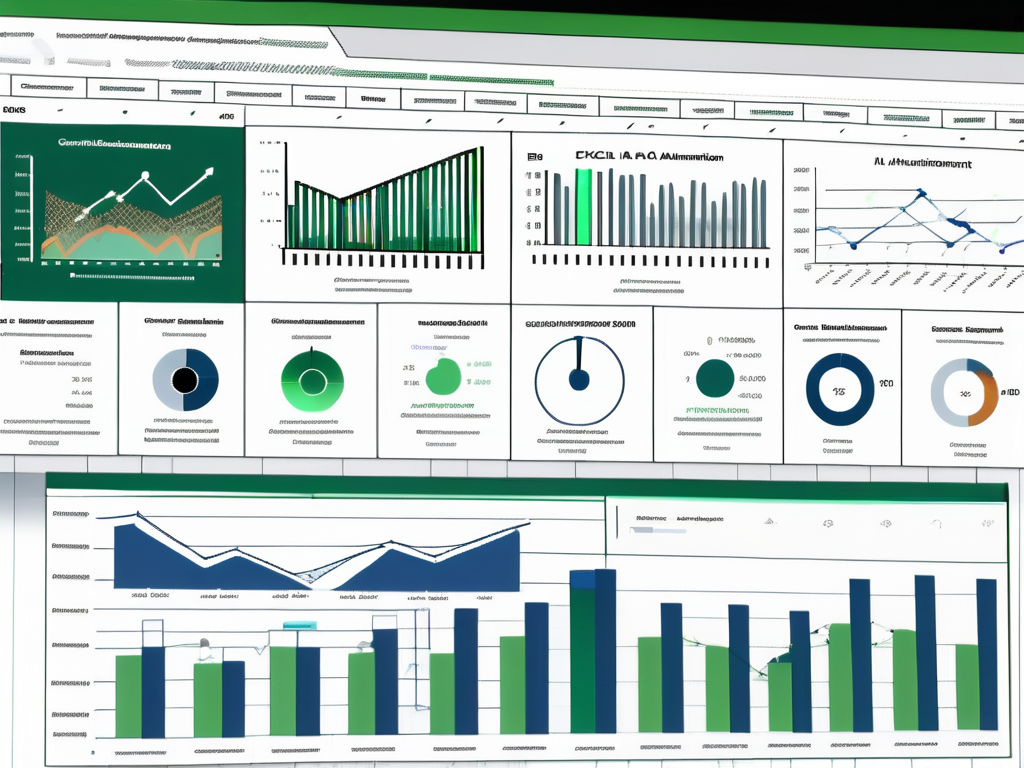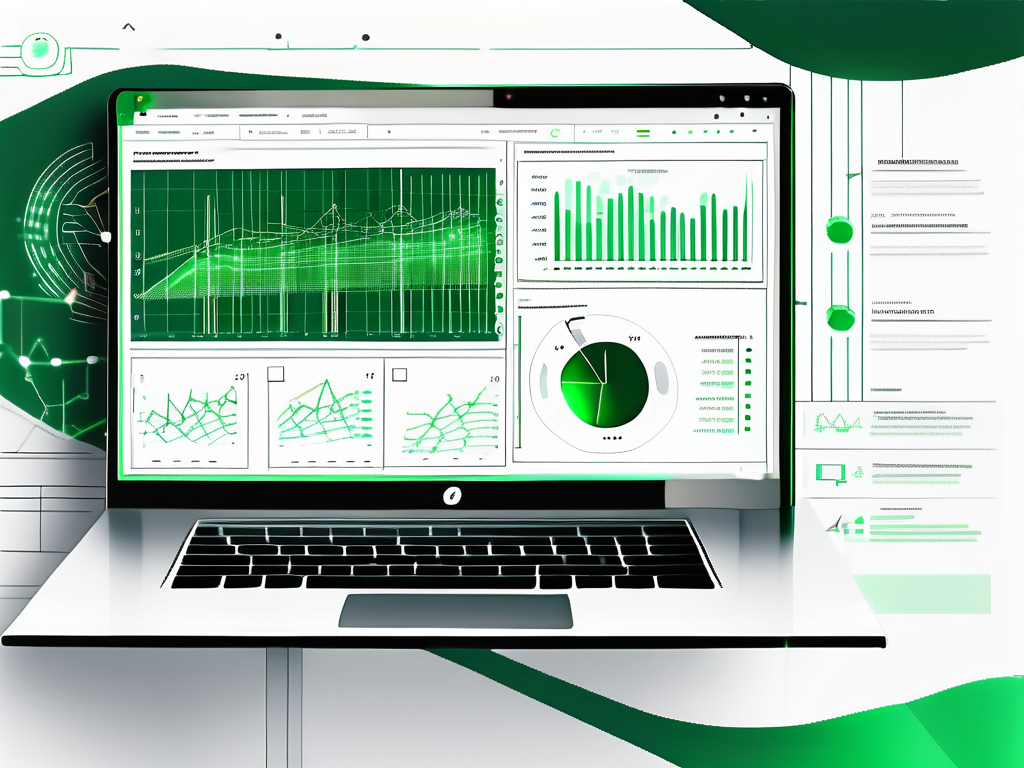Table of Contents
In today’s digital world, artificial intelligence (AI) has become a dominant force in almost every industry. From healthcare to finance, AI is transforming the way we analyze data and make informed decisions. In the realm of business and finance, Microsoft Excel has long been the go-to software for spreadsheet analysis. However, with the integration of AI, Excel has taken a giant leap forward in terms of functionality and efficiency. In this article, we will explore how AI is revolutionizing spreadsheet analysis in Excel, understand the basics of AI in Excel, delve into the evolution of Excel, and discuss the benefits and future of AI in this powerful software.
Understanding the Basics of AI in Excel
Before delving into the impact of AI on Excel, it is essential to define what AI is in the context of this software. AI in Excel refers to the integration of advanced algorithms and machine learning capabilities that enable the software to analyze and interpret data more intelligently.
AI in Excel can perform tasks such as data cleaning, automated calculations, pattern recognition, and even predictive analysis. By automating these processes, AI simplifies the overall data analysis workflow and allows users to focus on drawing meaningful insights from the data.
Defining Artificial Intelligence in Excel
In the realm of Excel, artificial intelligence is about utilizing advanced algorithms and machine learning techniques to automate data analysis, reduce errors, and improve efficiency. AI in Excel enables the software to understand complex patterns in data, make predictions, and suggest optimized solutions.
The Role of AI in Spreadsheet Analysis
When it comes to spreadsheet analysis, AI automates tedious and repetitive tasks, such as data entry and analysis. AI-powered features in Excel can identify patterns, detect errors, and recommend formulas based on the data. This saves time and reduces the risk of manual errors, allowing users to focus on high-level analysis and decision-making.
Additionally, AI in Excel can handle a vast amount of data, making it easier for users to work with large datasets and extract meaningful insights. It can also identify outliers, trends, and anomalies in the data, which helps users identify potential risks and opportunities.
The Evolution of Excel: From Simple Spreadsheets to AI Integration
Excel has come a long way since its inception in the early 1980s. Initially, it was primarily used for basic spreadsheet calculations and data storage. However, over the years, Excel has evolved into a powerful tool capable of complex data analysis.
The Journey of Excel: A Brief History
Excel was first introduced by Microsoft in 1985 as a simple spreadsheet program. It quickly gained popularity due to its ease of use and versatility. With each new version, Excel introduced new features and functionalities, making it an indispensable tool for businesses and individuals alike.
However, it was not until recent years that Excel started integrating AI capabilities to revolutionize spreadsheet analysis. This integration has changed the game, allowing users to leverage the power of AI to analyze data more efficiently and make more informed decisions.
The Advent of AI in Excel
The advent of AI in Excel has opened up a world of possibilities for data analysis. Excel now incorporates AI-powered features that can automatically recognize patterns, detect inconsistencies, and analyze data in a fraction of the time it would take a human operator.
These AI-powered features, such as data cleaning and pattern recognition algorithms, have greatly enhanced the accuracy and reliability of data analysis in Excel. Users can now trust the output generated by Excel’s AI capabilities, which leads to more informed decision-making and better business outcomes.
How AI is Changing the Face of Excel
AI has brought about a paradigm shift in Excel’s capabilities and functionalities. Let’s explore some of the ways AI has changed the face of Excel and revolutionized spreadsheet analysis.
AI-Powered Features in Excel
With AI integration, Excel now offers a range of powerful features to simplify data analysis. Some of these features include automated data cleaning, outlier detection, advanced visualization options, and even natural language processing capabilities for enhanced user interaction.
These AI-powered features make it easier for users to analyze large datasets, identify trends, and draw meaningful insights without the need for complex formulas or manual analysis. The automation provided by AI saves time and improves efficiency, allowing users to focus on higher-level tasks.
The Impact of AI on Data Analysis in Excel
The impact of AI on data analysis in Excel cannot be overstated. AI has enabled Excel to handle complex calculations, analyze vast amounts of data, and generate accurate predictions. This has transformed the way businesses analyze data and make strategic decisions.
By automating data analysis processes, AI eliminates human error and enhances data accuracy. This ensures that decisions are based on reliable information, leading to better outcomes. Moreover, AI can uncover hidden patterns and insights that human operators may overlook, providing businesses with a competitive advantage.
The Benefits of Using AI in Excel
The integration of AI in Excel brings numerous benefits to both individual users and businesses. Let’s take a closer look at some of the advantages of using AI in Excel for spreadsheet analysis.
Enhancing Efficiency with AI
One of the key benefits of using AI in Excel is improved efficiency. AI automates tedious and time-consuming tasks, such as data entry and cleaning, allowing users to focus on higher-level analysis and decision-making. This not only saves time but also improves overall productivity.
By streamlining the data analysis process, AI enables users to analyze larger datasets in a shorter timeframe. It also reduces the risk of manual errors, ensuring greater accuracy and reliability in data analysis.
Improved Accuracy and Predictive Capabilities
AI in Excel has significantly enhanced the accuracy and predictive capabilities of spreadsheet analysis. By leveraging advanced algorithms and machine learning techniques, AI can identify trends, detect anomalies, and make predictions based on historical data.
This predictive capability enables businesses to anticipate market trends, highlight potential risks, and make data-driven decisions. The accuracy and reliability of AI-generated predictions help businesses stay ahead of the competition and make informed strategic choices.
The Future of AI in Excel
The future of AI in Excel looks promising, with new trends and advancements on the horizon. Let’s explore some of the emerging trends in AI for spreadsheet analysis and potential challenges that need to be addressed.
Emerging Trends in AI for Spreadsheet Analysis
As AI technology continues to evolve, new trends are emerging in the realm of spreadsheet analysis. One such trend is the integration of natural language processing capabilities, which allows users to interact with Excel using voice commands and plain language queries.
Another emerging trend is the integration of AI and machine learning models to provide more sophisticated predictive analysis and forecasting capabilities. These advancements will further enhance the accuracy and reliability of spreadsheet analysis in Excel.
Potential Challenges and Solutions for AI in Excel
While the integration of AI in Excel brings numerous benefits, it also presents some challenges. One of the main challenges is ensuring data privacy and security. With AI analyzing vast amounts of data, it becomes crucial to protect sensitive information and comply with data protection regulations.
Another challenge is the need for training and upskilling users to leverage the full potential of AI in Excel. As AI becomes more prevalent, organizations should invest in training programs to help users understand and utilize AI-powered features effectively.
In conclusion, AI is revolutionizing spreadsheet analysis in Excel. The integration of AI has transformed Excel from a basic spreadsheet program to a powerful tool that can automate data analysis, improve accuracy, and enable predictive capabilities. With AI-powered features, Excel users can now analyze large datasets, identify trends, and make informed decisions more efficiently. The benefits of using AI in Excel are evident, from enhanced efficiency and time savings to improved accuracy and predictive capabilities. The future of AI in Excel looks promising, with emerging trends and advancements set to further enhance spreadsheet analysis. However, it is important to address potential challenges such as data privacy and user training to fully realize the potential of AI in Excel.








